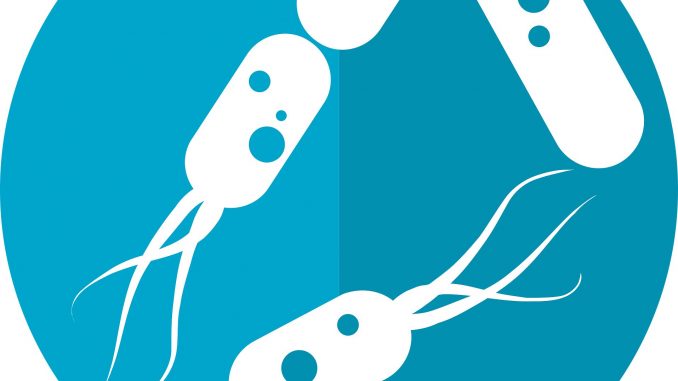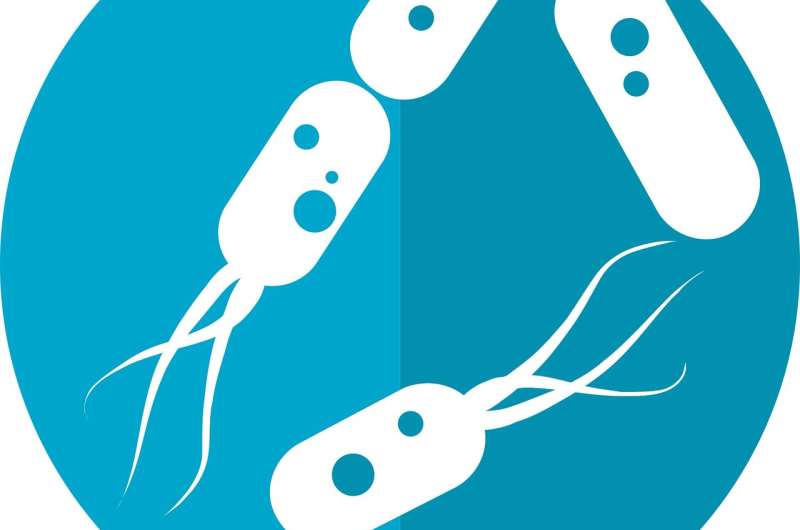

From immunity to metabolism to mental health, it seems like the gut microbiome has been linked to every aspect of human health and disease.
But with hundreds of bacterial species populating our gastrointestinal tract, it’s a daunting task to pinpoint which molecules made by which bacteria affect which biological processes—and how they do so.
“Microbiome studies need to move from making associations to determining function and causation,” said Ramnik Xavier, the Kurt J. Isselbacher Professor of Medicine in the Field of Gastroenterology at Harvard Medical School and Massachusetts General Hospital, a core institute member at the Broad Institute of MIT and Harvard, and co-director of the Center for Microbiome Informatics and Therapeutics at MIT.
Such knowledge is essential for learning how to manipulate gut bacteria to treat or prevent illness.
A team led by researchers at HMS and the Broad has just accomplished the rare feat of connecting those dots for one important gut bacterium.
“The real significance of this work was connecting a bacterium, the molecule it makes, the pathway it operates through, and the biological outcome,” said Jon Clardy, the Hsien Wu and Daisy Yen Wu Professor of Biological Chemistry and Molecular Pharmacology in the Blavatnik Institute at HMS and co-senior author of the study with Xavier. “That’s very rare.”
Clardy, Xavier, and colleagues focused on Akkermansia muciniphila, a species that accounts for an impressive 3 percent of the gut microbiome. It gets its name from the intestinal mucus it breaks down.
Study after study had suggested that A. muciniphila plays a key role in maintaining healthy immune processes, seeming to protect against diseases such as type 2 diabetes and inflammatory bowel disease and make cancer cells more responsive to immune checkpoint therapies.
Until the current work, though, no one could confirm the connection by showing how.
Start to finish
The researchers show in a report published July 27 in Nature that the links begin with a lipid—a fat—in A. muciniphila‘s cell membrane.
“That discovery was quite surprising. The usual suspects for triggering an immune response would be a protein or a sugar,” said Clardy.
After discovering the molecular structure of the lipid, the team found that it communicates with a pair of receptors on the surface of many immune cells. These receptors, known as toll-like receptor 2 and toll-like receptor 1, detect bacteria and help the immune system determine whether they’re friend or foe. In this case, versions of TLR2 and TLR1 bound together in a way scientists hadn’t seen before.
The researchers showed in cell cultures that the fat’s activation of TLR2-TLR1 can trigger the release of certain cytokines—immune proteins involved in inflammation—while leaving other cytokines alone.
They also confirmed that the lipid helps maintain immune homeostasis. They found that low doses of the lipid act like a leash, preventing the immune system from reacting to a potentially harmful molecule until that molecule reaches significant levels. On the other end, they saw that high doses of the lipid don’t stimulate an immune response much more than low or medium doses, keeping a healthy ceiling on inflammation.
New doors open
The work introduces new possibilities for developing drugs that piggyback on A. muciniphila‘s ability to manipulate the immune system and fight disease. Members of Clardy’s lab have made that job easier by revealing the molecular structure of the lipid and figuring out how scientists can make it and similar ones easily in the lab.
The study also provides a model for pinpointing how other members of the gut microbiome act on the body.
“You can change the bacterium and apply the same set of tests,” said Clardy.
The researchers showed that, contrary to the expectations of many people in the field, such work doesn’t require fancy techniques. They used traditional methods called spectroscopic analysis and chemical synthesis to find and understand the lipid molecule.
In fact, despite its “remarkable activity,” the lipid has a “generic structure” that would have flown under the radar of more advanced genomic or metabolomic analyses, Clardy said.
“The gut microbiome and the immune system are very complicated, which makes you expect that answers will be complicated too,” he said. “But sometimes complicated things are just lots of simple things.”
The findings arose from expertise across several disciplines. The team’s work combined chemistry, structural biology, and pharmacology, specialties of Clardy’s lab, with biological and immune analyses, strengths of Xavier’s lab.
Working on a project that’s rooted in basic biochemistry and has immediate ties to human health “feels great,” said Clardy. “In principle, this kind of work is what we’re supposed to do, but it’s not always the way things work out.”
“I was delighted to work with Ramnik, whom my mother would have called a ‘real doctor,’ on problems important to human diseases and unmet medical needs,” he added.
Source: Read Full Article